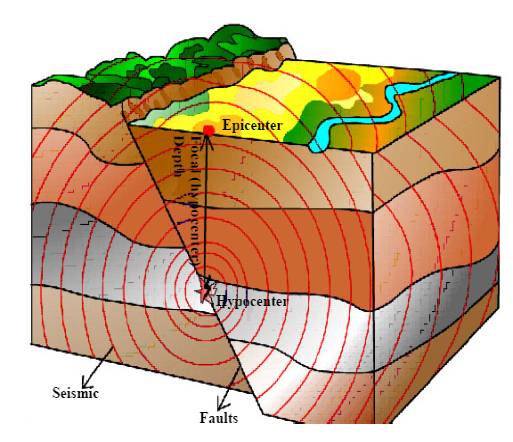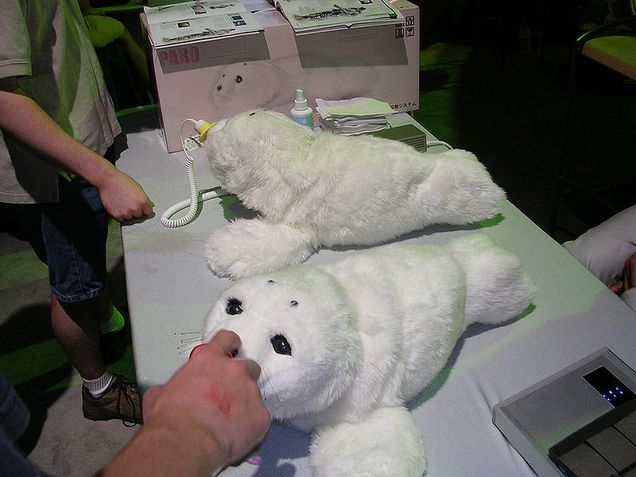By alex520
Pine State Earthquake
New England earthquakes are small, but common.
Albert Einstein once said, “The whole of science is nothing more than a refinement of everyday thinking.”1 This sentiment, shared by a community of self-professed science lovers, (myself included) is true. I think about science all the time. Like when I compare nighttime constellations to skeletal formulas of organic compounds. Or when I relate reading musical chords to the translation of amino acids from mRNA.
I cannot help it. It just happens. Which explains why, at 7pm on Tuesday, after the effects of a 4.6 magnitude earthquake shook the city of Boston2, I was Googling convergent and divergent plate boundaries.
Shaking Things Up
Earthquakes are a surprisingly common; thousands occur each day but are of such small magnitude that they are rarely felt. Contrary to popular opinion, these tremors do not only occur at fault lines where two continental or oceanic plates meet, but anywhere on the earth’s crust. As layers of the crust shift toward (convergent) or away from (divergent) each other, the resulting stress between the plates increases gradually. When this stress is suddenly released, seismic waves send vibrations throughout hundreds of miles of rock, initiating quakes on the surface as well as possible volcanic activity. The strength of the waves determines the quake’s magnitude on the Richter scale from 1.0 to 10.0; exceeding 7.0 is considered to be major3.
The earthquake felt on campus was the result of plate movement in southern Maine. I did not think there were many major fault lines in New England, but little tremors measuring less than 2.0 shake the Pine Tree State several times a year. In fact, in 2006, Maine experienced a slew of earthquakes caused mainly (haha) by the aftermath of last ice age.4
You know, the one from 14,000 years ago. (Earth’s crust is slow to catch up.)
Even though the massive ice sheets that once covered North America have since melted, the crust is still recovering from supporting their weight. Ice ranging from a mile to two miles thick pushed the Earth’s crust down by 500 feet, creating a landscape designed by centuries of mountain building and erosion.4
According to geologists, the continental plate under New England still has to rise about another 230 feet to recover from the weight of the ice age4. However, if the past is any indication of how gradual this recovery will be (and it is), future quakes will be rather minor and go undetected. So, instead of being too shaken up the next time you feel the ground move, double check for construction down the street.
References
1Harris, K. (1995).Collected Quotes from Albert Einstein.. Retrieved Oct 16, 2012, from http://rescomp.stanford.edu/~cheshire/EinsteinQuotes.html.
2Winter, M. (2012). 4.6 earthquake shakes Maine, felt in Boston. USA Today. Retrieved Oct 16 2012 from http://www.usatoday.com/story/ondeadline/2012/10/16/earthquake-maine -boston/1637441/? utm_source= dlvr.it&utm_medium=twitter&dlvrit=206567
3Earthquakes: Seismic Destruction. National Geographic. Retrieved Oct 16 2012 from http://environment.nationalgeographic.com/environment/natural-disasters/earthquake-profile/,
4 Keim, B. (2011). Mysterious Maine Earthquakes Caused by Ice Age Rebound. Wired Science. Retrieved Oct 16 2012 from http://www.wired.com/wiredscience/2011/05/maine-earthquakes/
Ashley Mayrianne Jones (CAS/COM ’14) is an ecology major and animal-lover from New Hampshire hoping to obtain a graduate degree in science and medical journalism. She can be reached at ashjones@bu.edu.
Robotic Therapy Made Adorable
The Synapse Weekly - exploring therapy with a modern twist.
Robots are going to take over the world. Seriously! They’re all creepy and decidedly mechanic. Remember I, Robot?! Will Smith was trying to warn us. Don’t believe me? Look at the Svedka ads. Think there any similarities between that anthropomorphic robot and those seen in Smith’s 2004 blockbuster hit?
The human race is doomed. WAIT, WAIT! HOLD THE PHONE.
This seal, which looks like stuffed animal, is actually a robot. Even better: it’s used for good. These soft and fuzzy robots were developed in Japan to interact with hospital patients undergoing long-term medical care.1 Known as Paro, this cuddly model is the eighth in a series of robots designed for therapeutic use.1
Paro works by “learning” about its surroundings. It is equipped with five sensory tools that measure mechanical pressure, light, sound, posture, and temperature.1 Each tool helps Paro understand something about its environment. The pressure sensors help indicate when Paro is being stroked or hit; the light sensors differentiate between light and dark; the posture sensors allow Paro to position itself in space.1 Paro is also able to recognize its name, basic commands and sounds.1
With all of these abilities, Paro is essentially an interactive stuffed animal. It hugs its owners, responds to verbal cues, learns preferred behaviors and can imitate a baby harp seal.1 All of this technology is amazing, but the most impressive thing about Paro is its rehabilitative services. In the United States, two nursing homes in Pennsylvania tested Paro’s effect on patients with Alzheimer’s disease.2 The nursing homes reported positive effects, likening Paro therapy to that of visiting animals.2 While the effects of Paro are comparable to live animals, there are a few extra benefits. Paro is hypo-allergenic, always available, and does not require intensive care.2
Paro robots have been available in the United States since 2009, but are not often used.3 While cost is a minor factor ($6,000 dollars a seal), the biggest concern is ethical in nature.4 Those who argue against Paro therapy assert that humans – not robots – should be doing all therapeutic work.3, 4 By substituting human interactions with robotic interactions, there is a possibility that no true progress is made.3, 4 Paro supporters claim that Paro is not a substitute for human interaction, but a supplement for care.1, 4 Others are skeptical of Paro’s true therapeutic nature.4 Today, clinical trials are still in progress, and ethical debates continue.
Despite these ethical debates, one thing remains true. Unlike SvedkaBots, Paro is one cute and helpful robot.
References
1 PARO robots USA. (2011). PARO Therapeutic Robots. Retrieved from http://www.parorobots.com/
2 Barcousky, Len. (4 March, 2010). Two Vincentian nursing homes experiment with robotic pets for Alzheimer’s patients. Pittsburgh Post Gazette. Retrieved from http://www.post-gazette.com/pg/10063/1039961-54.stm
3 Tergesen, Anne and Miho Inada. (21 June, 2010). It’s not a stuffed animal, it’s a $6,000 medical device: Paro the robo-seal aims to comfort elderly, but is it ethical? Wall Street Journal. Retrieved from http://online.wsj.com/article/SB10001424052748704463504575301051844937276.html?KEYWORDS=paro
4 Harmon, Amy. (4 July, 2010). A soft spot for circuitry. New York Times. Retrieved from http://www.nytimes.com/2010/07/05/science/05robot.html?_r=2&adxnnl=1&pagewanted=1&adxnnlx=1330448491-dMDFmhy4HhuDrs/RxjAL2w
This Week in Science Events
Events from 4/9 - 4/13.
Check out some of the science events going on this week at BU.
MONDAY, APRIL 9:
Chemistry Colloquium: Prof Liming Zhang, University of California Santa Barbara
Accessing alpha-Oxo/Imino Gold Carbenes via Gold-Catalyzed Alkyne Oxidation: A Non-Diazo Approach
Biology Department-wide Seminar
Insights into the evolution of novel floral morphology. Dr. Elena Kramer, Harvard University.
TUESDAY, APRIL 9:
Gordon Semenoff, University of British Columbia, Canada
What a Particle Physicist Can Learn from Graphene.
WEDNESDAY, APRIL 11:
Boston University Medical Campus Provost’s Interdisciplinary Research Conferences
Parkinson’s Disease and Epilepsy: Bridging the gap between clinical, molecular, and computational sciences to cure nervous system diseases
THURSDAY, APRIL 12:
Kaufman Lecture
“The Stellwagen Bank National Marine Sanctuary – Its Future”
Statistical Physics of Earthquake Aftershocks, By H. Eugene Stanley
Center for Neuroscience Systems Seminar with Hung Cao





